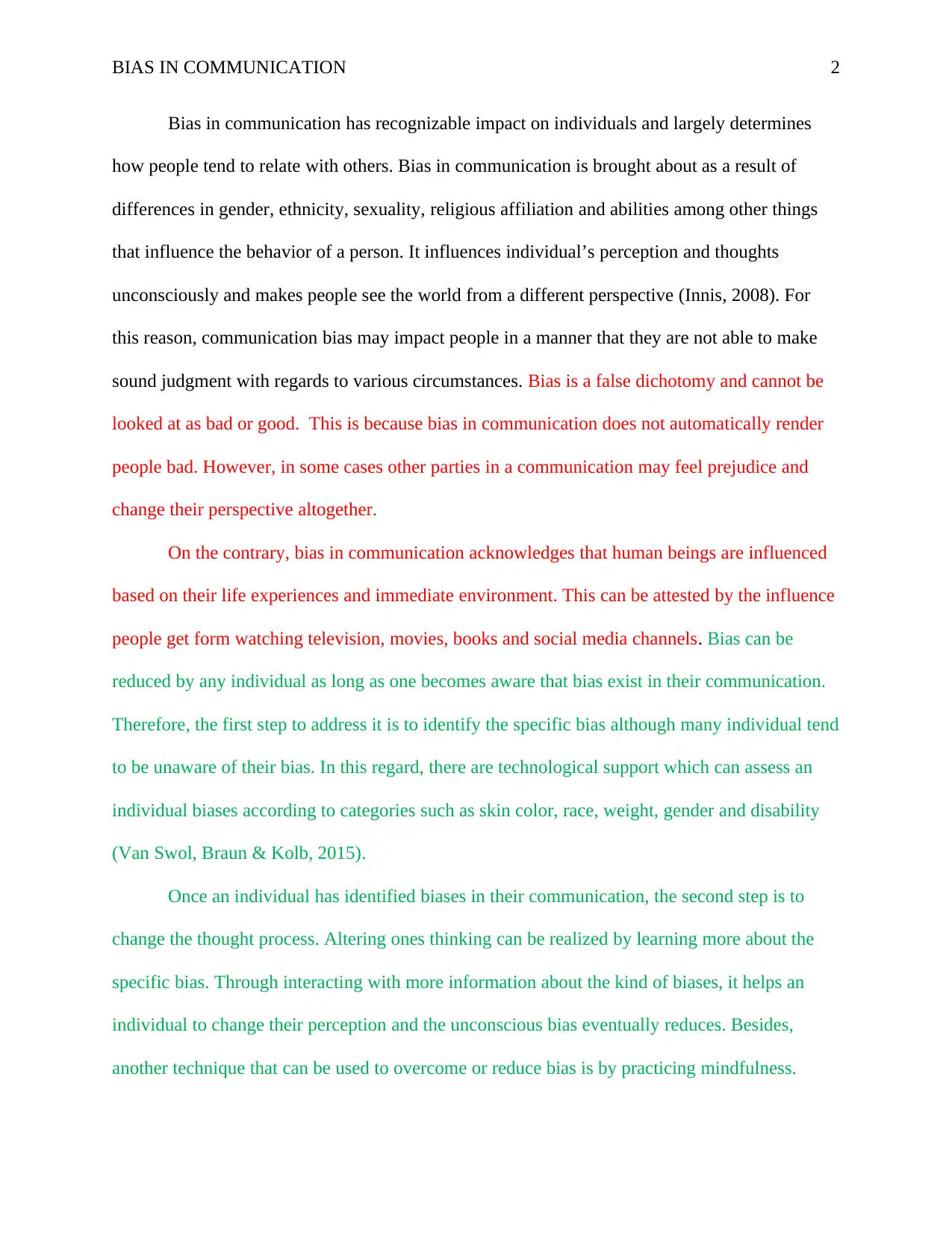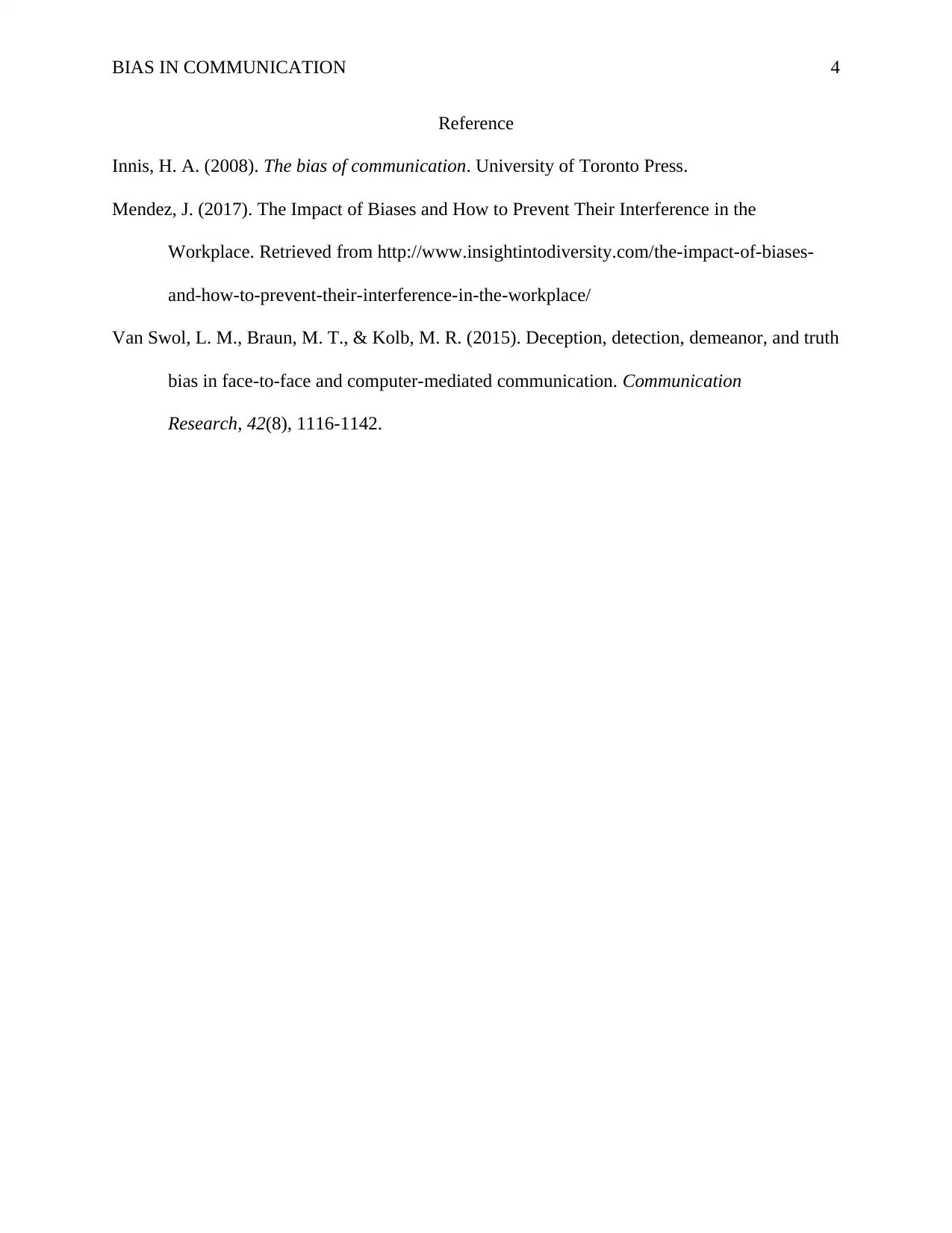Exploring the Role of Bias in Human Communication Processes
VerifiedAdded on 2023/04/23
|4
|711
|393
Essay
AI Summary
This essay delves into the pervasive issue of bias in communication, exploring its origins in differences like gender, ethnicity, and religious affiliation, and how it unconsciously shapes individual perceptions and judgments. The essay clarifies that bias isn't inherently negative but reflects human experiences and societal influences, as seen through media's impact. It emphasizes the importance of recognizing and addressing bias through self-awareness and technological tools. Furthermore, the essay outlines strategies to reduce bias, such as learning about specific biases and practicing mindfulness. It highlights the significance of involving others in communication and promoting respect and fairness. Ultimately, the essay concludes that while bias is often unconscious and influenced by environment, it is a reflection of societal influences and can be managed through awareness and proactive measures.
1 out of 4











![[object Object]](/_next/static/media/star-bottom.7253800d.svg)